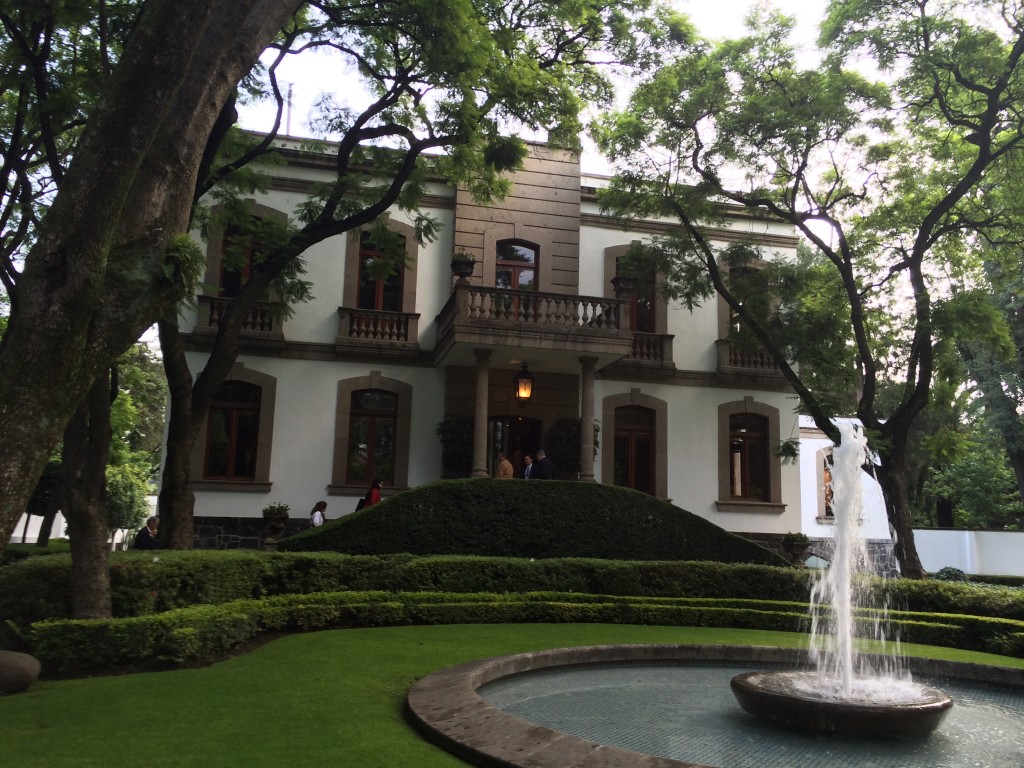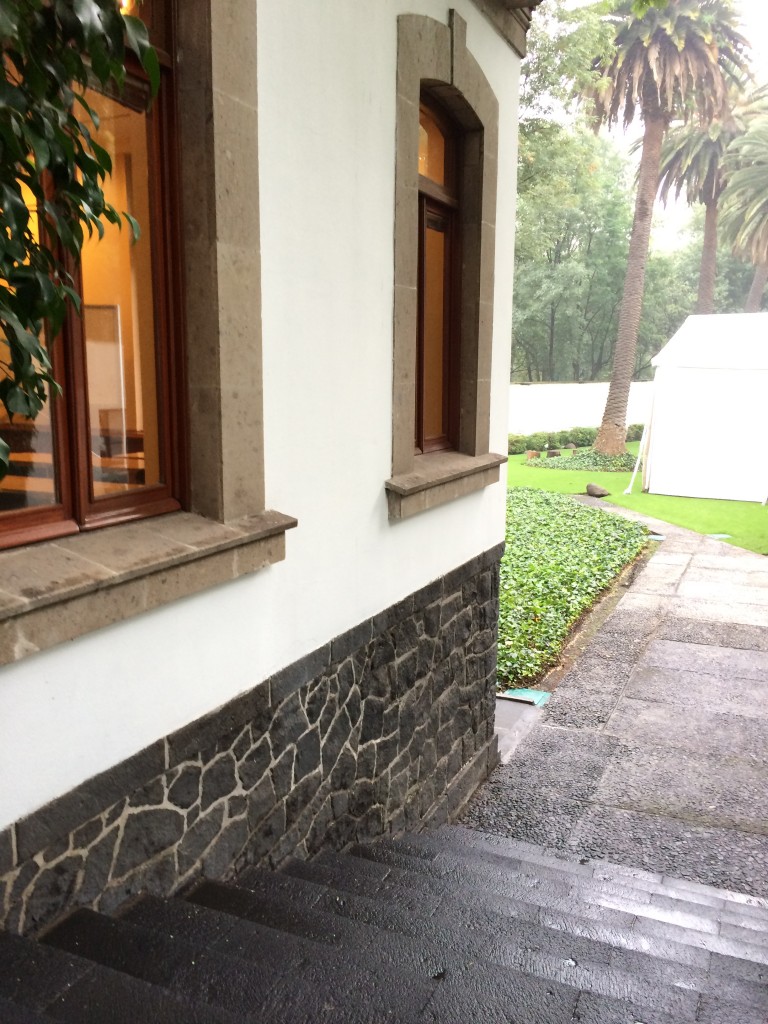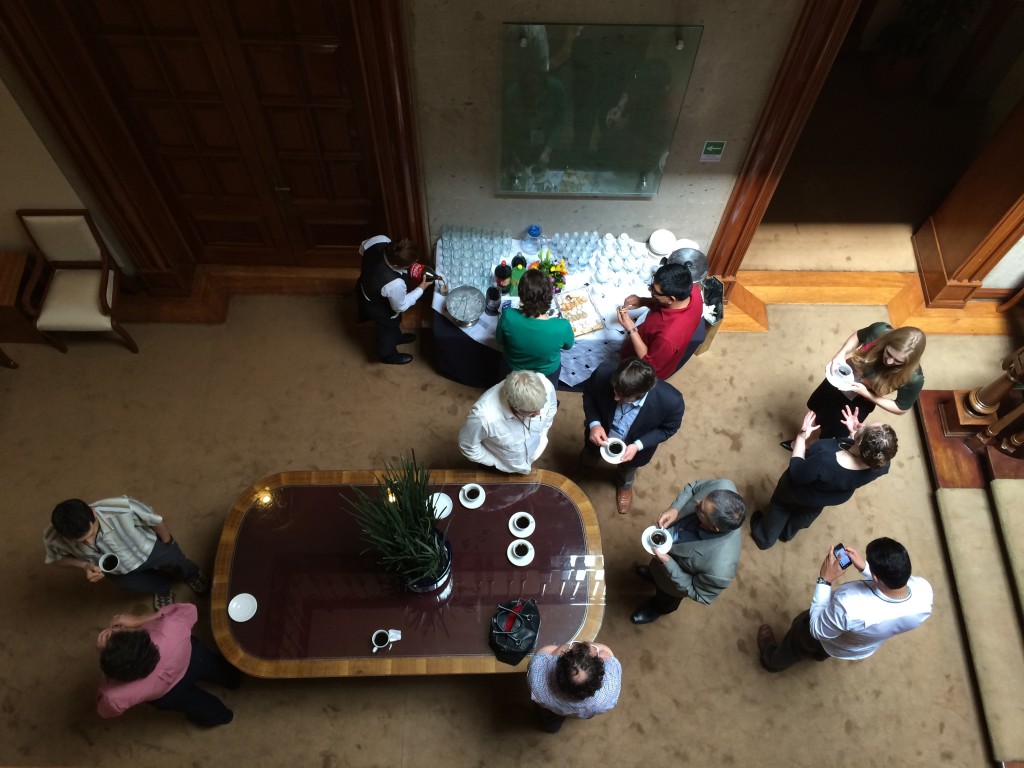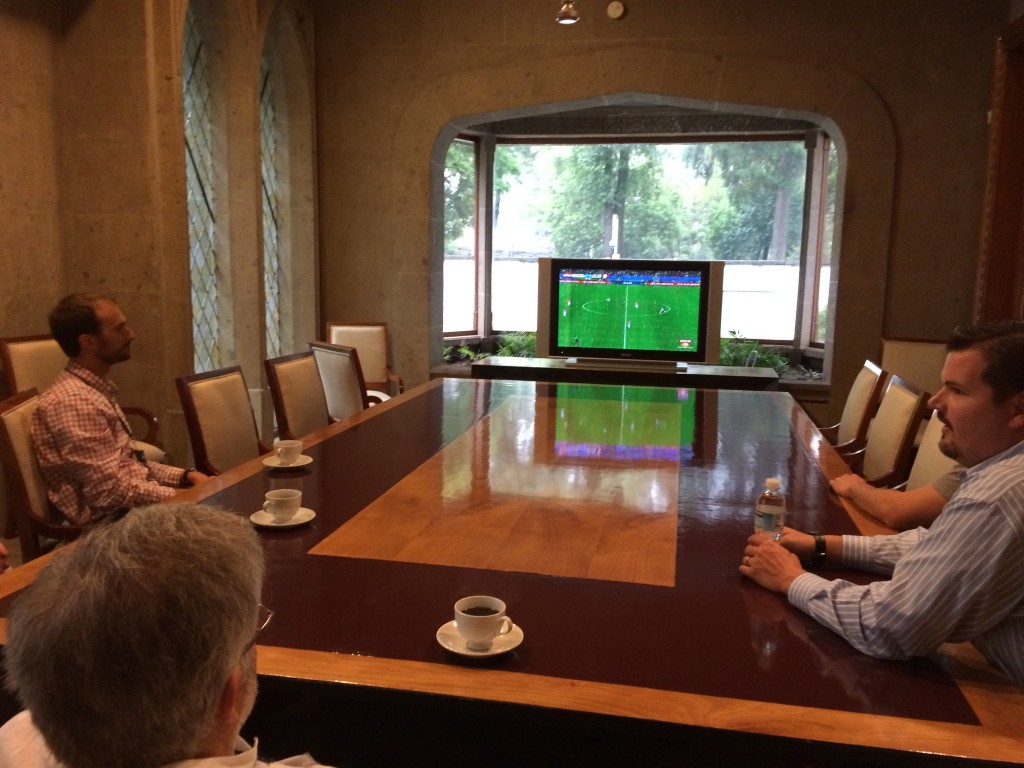2 July 2014
Branching out at the New Horizons In Science Symposium (Mexico City)
Posted by Jessica Ball
A little while ago, as some of you may have guessed from my tweets, I was in Mexico City on a business trip. My reason for the whirlwind visit was to present a talk about volcanic hazards to the New Horizons in Science Symposium, a joint effort between the National Academies of Mexico, Canada and the United States.
What was really unique about this conference (compared to something like GSA or AGU fall meetings) was that it wasn’t just about geology. The New Horizons Symposium brought together scientists who work in natural hazards with chemists, biotechnologists(?), astrophysicists,and oceanographers. Now, I might encounter a few of those at a GSA or AGU meeting, but I probably wouldn’t spend a lot of time listening to talks or posters that far outside my expertise – which made this gathering really fascinating.

Our venue, the Casa de California (a ‘mini-campus’ run by the University of California system)
The New Horizons idea was modeled after the US National Academies’ “Frontiers in Science” symposia, where young scientists in a variety of disciplines gather to present current ideas in their fields and discuss them with people outside their fields. The idea is to build cross-disciplinary collaborations and engage in that all-important excercise, networking. The joint Mexico-US-Canada group at the symposium I attended also looks good for diplomatic relations for our respective countries, and we had a special visit from the US Ambassador to Mexico affirming how important it is to have scientific exchange between North American countries.

Opening the conference with speeches from officials of the various academies (Jose Franco, President of the Mexican Academy of Sciences Introduction by Michael Clegg, Foreign Secretary of the US-National Academy of Sciences and Jeremy McNeil, Foreign Secretary of The Royal Society of Canada) and the US ambassador to Mexico (Anthony Wayne).
This meeting is eventually meant to focus on the work of early-career scientists, but for this first iteration there was a mix of people from my age to emeritus professors, and I think it worked well. I was asked to give a talk in the hazards session, so I decided to highlight volcanic collapses (particularly the kind I study, which aren’t related to eruptions). I was hoping it would be an intriguing topic for the audience, since Mexico has quite a few volcanoes that aren’t necessarily active but can be prone to collapsing, and it was a good chance for me to do some background review for the postdoc I’ll be starting once I leave GSA.

Appropriately enough for a volcanologist, the Casa de California was made out of basalt (the steps and foundation) and a tuff (the window frames).
Because we weren’t in front of an audience of experts in our fields, we were supposed to keep the talks a little more general than we might normally present at a conference. I think this was a harder task for people who relied on a pretty complicated chemical or biologic background for their research, but I think everyone managed pretty well and I was able to follow most of the talks without feeling like things were going over my head. I hope I did the same for my own talk without it sounding like I was oversimplifying. I will admit that I was very intimidated by all the talent in the room – I’m pretty sure I was the youngest keynote speaker, and it seemed like everyone else was already running a lab and racking up an impressive body of publications. For me that’s perfect ground for imposter syndrome to set in, but everyone in the group was very gracious and I got enough questions to feel like I contributed something valuable to the discussion.
One of the main ideas of the symposium was to cross the usual barriers that keep scientists in their own little topical niches. The nitty-gritty of doing science in our respective fields may vary wildly – I certainly don’t use radio telescopes or synthesize molecules in a lab – but that doesn’t mean I can’t contribute something to a conversation about, for example, communicating scientific concepts, or building effective partnerships between scientists and policymakers/industry/the public. And during those discussion periods, it was really interesting when people came up with angles on someone else’s research that never would have occurred to them. One question that I received had to do with the intersection of biology and geology – whether local ecosystems could be used to tell something about the chemical or geological conditions in the substrate. It was really neat to hear the question because when I was in the field in Guatemala, that very topic came up, but as geologists we all just shrugged and said, “Well, if I knew what that plant was, I might be able to say something…” Had we had a biologist around, or even ‘on call’, maybe we could have pulled a bit more ‘metadata’ out of the environment, as the questioner called it. It’s definitely an angle to think about in the future.
One really fun aspect of the conference was that day two also happened to be the day of the Mexico-Croatia World Cup game. We managed to do a little rearranging of the schedule and fit in the game, and the entire group – including our hosts at the Casa de California – sat down to watch. It was a nice break from the talks – even scientists need those during a conference, or we burn out – and it certainly didn’t stop us from chatting about our topics while we enjoyed the game!
If anyone is ever invited to a symposium like this one, I would definitely recommend it. I learned a lot about scientific topics I don’t normally study from some very smart people, and I hope they took some useful ideas away from what I was talking about. Although two days made for a bit of a hectic trip, and next time I definitely want to spend longer in Mexico City so I have a chance to see some of the cultural sites. (It’s a pity it takes a while to get anywhere, but I suppose a population of 20-million-odd-people will do that. I do know I’ll never be complaining about DC traffic again!)





 Jessica Ball is a volcanologist at the U.S. Geological Survey, researching volcanic hydrothermal systems and stability, and doing science communication for the California Volcano Observatory. She previously worked at the Geological Society of America's Washington DC Policy Office, learning about the intersection of Earth science and legislative affairs. Her Mendenhall postdoc and PhD focused on how water affects the stability of volcanoes, and involved both field investigations and numerical modeling applications. Her blogging covers a range of topics, from her experiences in academic geosciences to science outreach and communication to her field and lab work in volcanology.
Jessica Ball is a volcanologist at the U.S. Geological Survey, researching volcanic hydrothermal systems and stability, and doing science communication for the California Volcano Observatory. She previously worked at the Geological Society of America's Washington DC Policy Office, learning about the intersection of Earth science and legislative affairs. Her Mendenhall postdoc and PhD focused on how water affects the stability of volcanoes, and involved both field investigations and numerical modeling applications. Her blogging covers a range of topics, from her experiences in academic geosciences to science outreach and communication to her field and lab work in volcanology.
A tangent that might fit today’s topic. The archaeologists at Tikal, a Mayan ruin in Guatemala, are trying to pinpoint which volcano the ash that was used as tempera in the clay body of the pottery that was found at the ruin. It is enough of a knot that they are not sure if the material was imported in on the backs of men or carried in by the wind . Inter discipline at its best